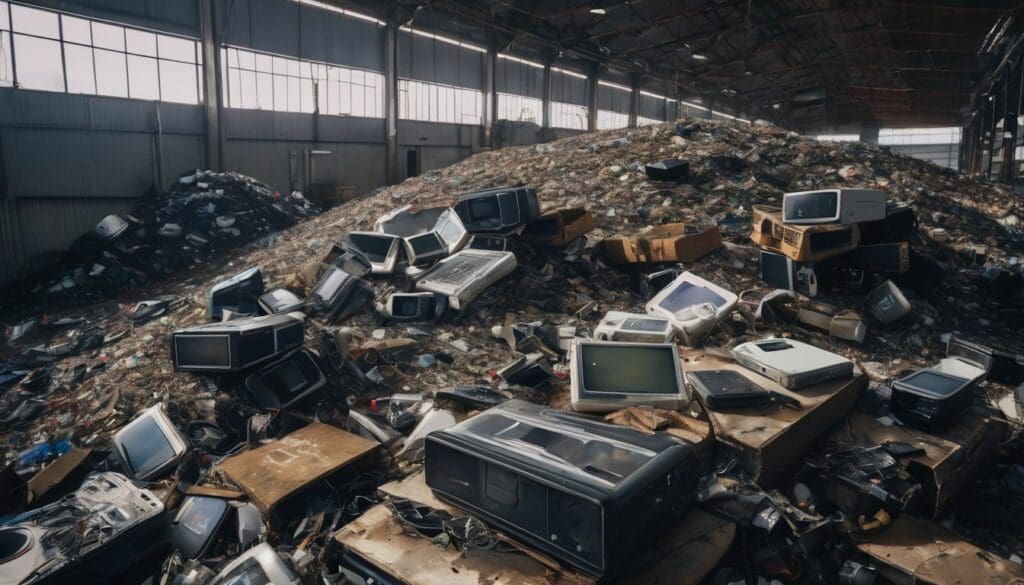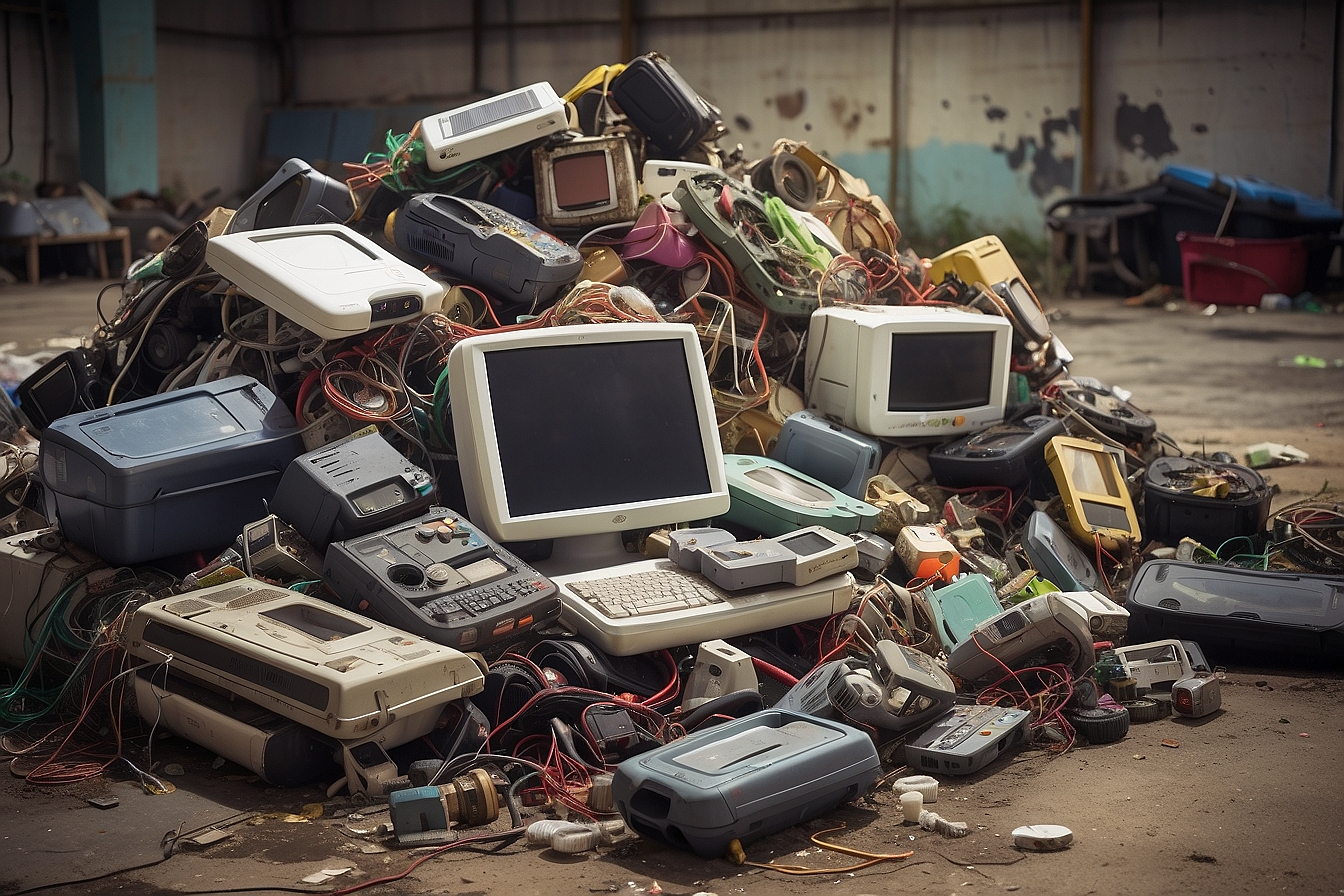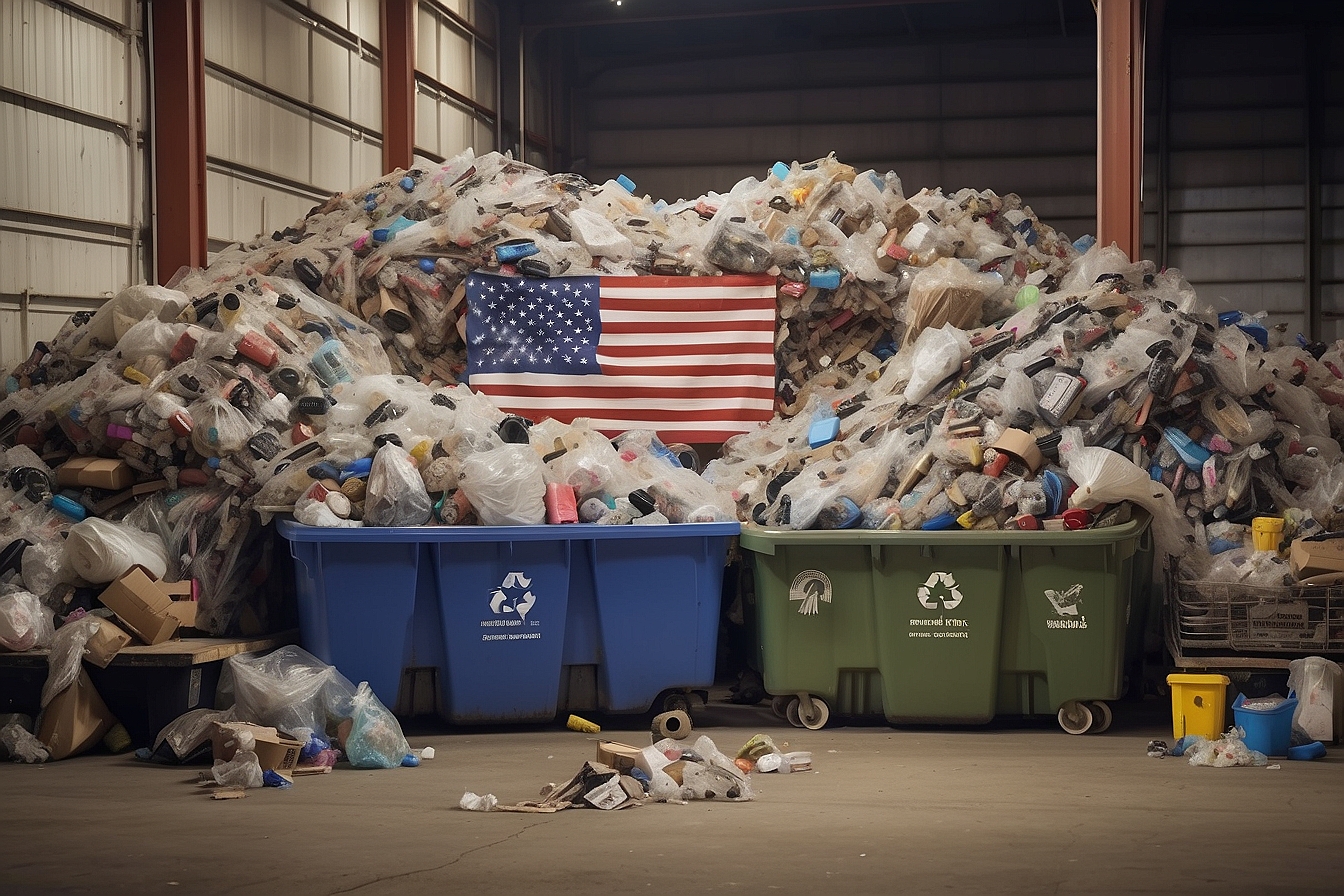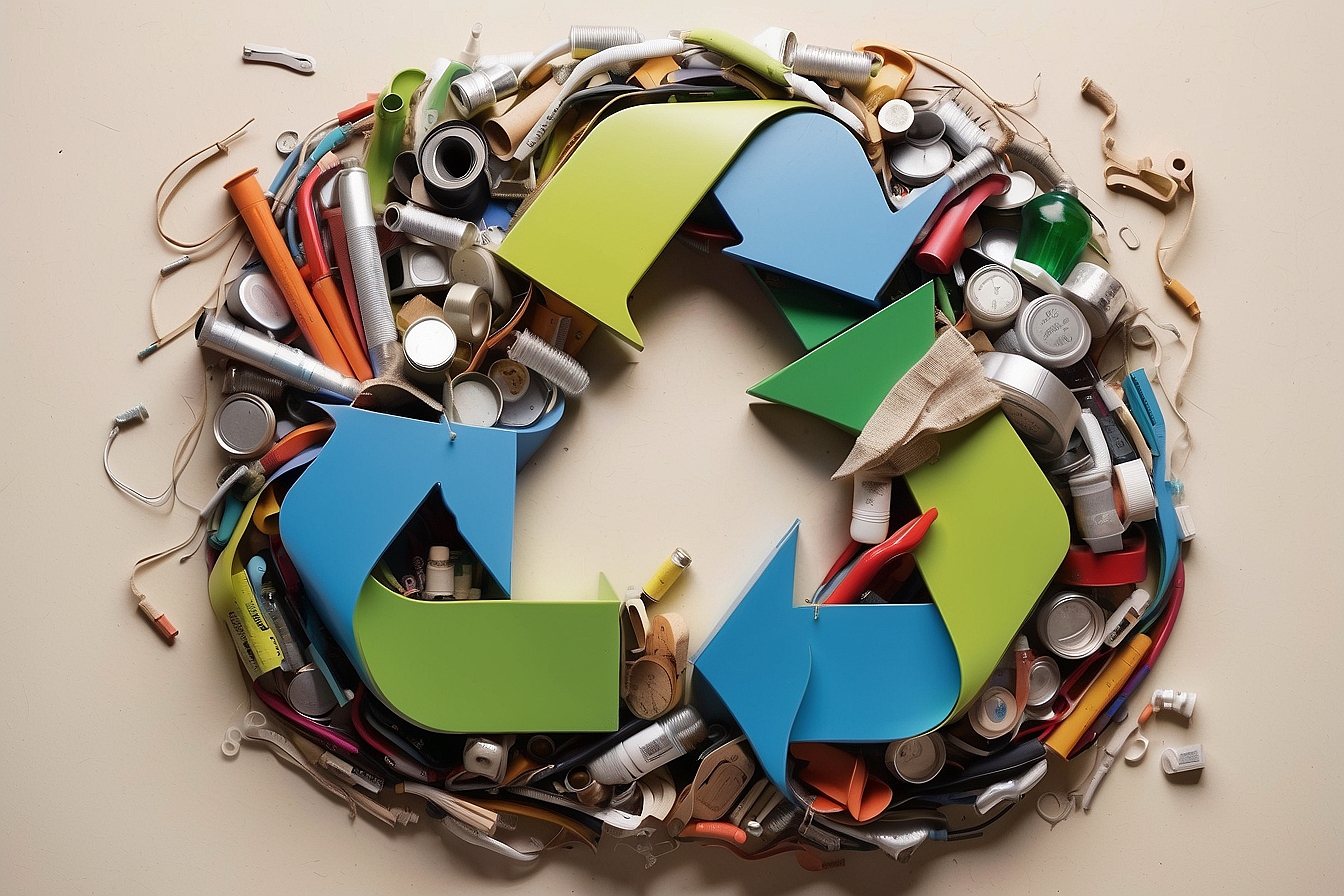We’ve all become increasingly aware of the burgeoning heaps of redundant phones, laptops, and assorted gadgets that seem to multiply in our homes. Much like you, we’ve observed these technological mounds with a sense of bemusement and concern.
But have you grasped the sheer scale? A staggering 50 million tonnes of electronic waste is produced on a global scale each year! Diving headfirst into this topic has allowed us to unearth not only the gravity of the problem but also actionable strategies that can help us navigate through this digital conundrum.
Keep reading – you’ll be surprised at how straightforward it can be to make a difference!
Key Takeaways
- Recycling electronic waste extracts valuable materials such as gold and copper, which can be used to create new devices, reducing the need for fresh raw materials.
- Educating people about the dangers of e – waste helps them make better choices when buying and disposing of gadgets, leading to less environmental damage.
- Formal recycling facilities ensure e – waste is handled safely, while informal recycling in developing countries often lacks proper regulations, risking health and the environment.
- Reducing consumption, reusing electronics, and repairing broken devices can significantly decrease e-waste production and conserve resources.
- Extended producer responsibility makes manufacturers accountable for their products’ end-of-life impact by encouraging eco-friendly design and recycling.
Understanding E-waste
E-waste, or electronic waste, refers to any discarded electronic devices. The growing consumption of technology leads to the generation of e-waste, which poses severe environmental and health hazards.
Definition
Electronic devices eventually reach the end of their useful lives, and we call this discarded electronic gear e-waste. It includes broken or obsolete phones, computers, televisions, and a broad range of other electronic items that can’t be used anymore.
E-waste contains hazardous materials which pose serious risks to our environment and health if not disposed of properly. We must manage this waste sustainably to prevent pollution and protect natural resources.
What many don’t realise is that e-waste isn’t just a pile of junk – it holds valuable components like gold, silver, copper, and rare earth elements that can be recovered through recycling efforts.
These resources are critical for making new gadgets without depleting raw materials from Earth’s crust. Our challenge lies in diverting this growing stream of electronic refuse away from landfills towards more sustainable disposal methods such as reuse and repair wherever possible.
This way we safeguard both public health and the planet’s well-being while conserving precious metals for future technology innovations.
Causes of e-waste generation
Negative effects on the environment
Electronic waste has a detrimental impact on the environment. When disposed of improperly, electronic devices release harmful chemicals and metals into the soil and waterways, contaminating ecosystems and posing risks to wildlife.
The improper disposal of e-waste also contributes to air pollution when incinerated or left in landfills, further degrading the quality of our environment.
Moreover, electronic waste leads to significant energy consumption and resource depletion during its production process. This exacerbates environmental degradation as it contributes to deforestation, habitat destruction, and increased greenhouse gas emissions.
Negative effects on human health
Electronic waste contains hazardous materials such as lead, mercury, cadmium, and polybrominated flame retardants. When these substances enter the environment through improper e-waste disposal, they can contaminate soil and water sources, leading to serious health problems for communities living nearby.
Exposure to these toxic materials can result in neurological damage, respiratory issues, reproductive disorders, and even certain types of cancer.
Furthermore, informal recycling processes in developing countries often involve burning or dismantling electronic devices without proper protective equipment. This exposes workers to harmful fumes and particles that can cause respiratory illnesses and skin conditions.
The irresponsible management of electronic waste poses a significant risk to public health globally.
Solutions to E-waste Problems
We will explore various solutions to combat the growing issue of e-waste, including recycling, education and awareness, formal and informal e-waste recycling, reducing, reusing, repairing electronic devices, as well as the importance of extended producer responsibility (EPR) and banning single-use plastics.
If you want to learn more about sustainable electronic waste solutions, keep reading!
Recycling
One solution to the growing e-waste problem is recycling.
- Electronic waste recycling entails the collection and processing of old or broken electronic devices.
- This process aims to extract valuable materials from these devices, which can then be used in the production of new electronic products.
- Recycling reduces the need for mining and manufacturing of new materials, thus conserving natural resources like metals and minerals.
- It also prevents hazardous substances from being released into the environment when electronics are improperly disposed of.
Education and awareness
Educating and raising awareness about e-waste is crucial in addressing this growing problem. By informing communities about the environmental and health impacts of improper electronic waste disposal, individuals can make more informed decisions about their electronic devices.
Encouraging sustainable practices such as recycling, reusing, and repairing electronics through educational initiatives empowers people to take an active role in reducing e-waste pollution.
Fostering an understanding of the importance of proper electronic waste management supports sustainable development and pollution prevention efforts.
Building knowledge and awareness around e-waste also plays a vital role in advocating for policy changes at local, national, and global levels. Empowered individuals are more likely to support regulations that promote responsible electronic waste disposal methods.
Formal and informal e-waste recycling
After raising awareness about electronic waste, it’s time to delve into formal and informal e-waste recycling. Formal e-waste recycling involves regulated facilities that specialise in dismantling and processing electronic devices, keeping hazardous materials from contaminating the environment.
On the other hand, informal recycling often occurs in developing countries through unregulated channels, posing significant environmental and health risks due to improper handling of toxic materials.
Both formal and informal e-waste recycling are crucial aspects that demand attention within our global efforts to reduce electronic waste pollution.
Reducing, reusing, repairing
- Extending the lifespan of electronic gadgets through proper maintenance and timely repairs, reducing the need for frequent replacements.
- Supporting and promoting the use of refurbished electronic devices instead of always opting for new ones.
- Actively participating in e – waste collection drives and donating old but functional electronics to those in need.
- Sourcing spare parts and accessories to repair faulty electronic gadgets rather than discarding them entirely.
- Encouraging manufacturers to design products with removable and replaceable components, facilitating easier repairs and minimising electronic waste production.
The role of extended producer responsibility (EPR)
Manufacturers must take responsibility for the electronic products they produce. When companies embrace extended producer responsibility (EPR), they commit to managing the safe disposal and recycling of their products once consumers are done with them.
EPR also encourages manufacturers to design products that are easier to recycle, reducing environmental impact.
Additionally, Extended Producer Responsibility promotes eco-friendly practices such as using sustainable materials in electronics and minimising packaging waste. By implementing EPR, manufacturers can help reduce e-waste generation and contribute to a cleaner environment.
Banning single-use plastics at the national level
Manufacturers should be responsible for finding alternative materials to single-use plastics. It is essential that the government implement policies to ban single-use plastics nationwide.
This action will significantly reduce the generation of e-waste, contributing positively to environmental conservation and human health.
Conclusion
In conclusion, we have explored the pressing issue of e-waste and its far-reaching impact on our environment. We have identified solutions that include recycling, education, and advocating for extended producer responsibility.
It is crucial to implement these strategies to minimise the detrimental effects of electronic waste on our planet. Taking action now will lead to a healthier and more sustainable future for generations to come.
FAQs
1. What is the growing problem of e-waste?
The growing problem of e-waste refers to the increasing amount of electronic waste that’s causing contamination and raising environmental concerns worldwide.
2. How can we reduce electronic waste?
We can reduce electronic waste by promoting reuse and repair of electronic devices, applying smart buying decisions, and supporting products designed for a longer lifespan.
3. Why should we educate people about electronic waste?
Educating people about electronic waste is crucial in helping them understand its impact on our environment and motivating them to adopt responsible disposal practices.
4. What solutions are available to tackle e-waste issues?
Solutions to tackle e-waste include enhancing recycling programs, investing in research for sustainable materials, encouraging reduction in consumption, and educating communities on how they can make a difference.





